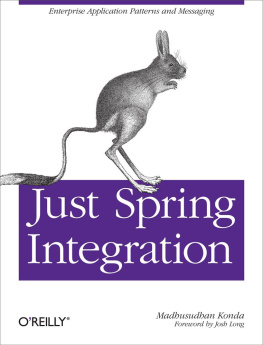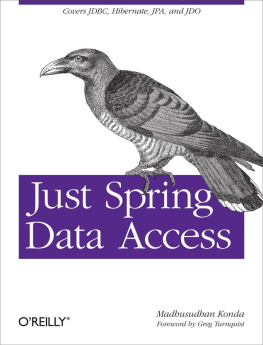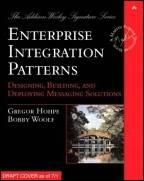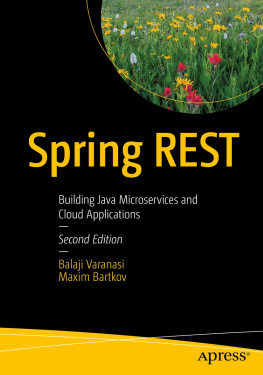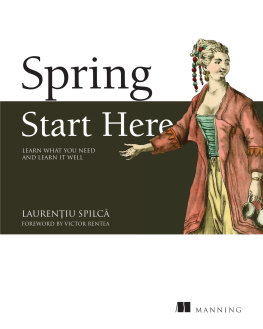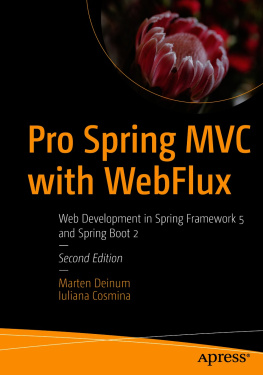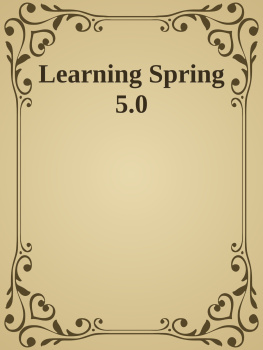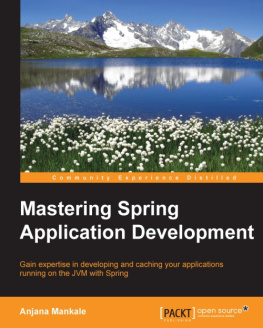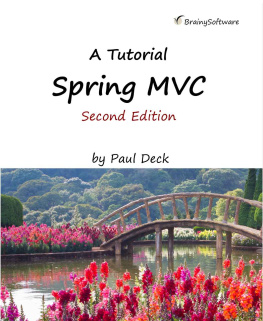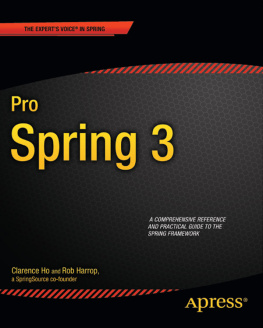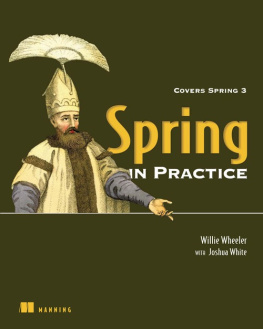Supplemental files and examples for this book can be found at http://examples.oreilly.com/0636920022671/. Please use a standard desktop web browser to access these files, as they may not be accessible from all ereader devices.
All code files or examples referenced in the book will be available online. For physical books that ship with an accompanying disc, whenever possible, weve posted all CD/DVD content. Note that while we provide as much of the media content as we are able via free download, we are sometimes limited by licensing restrictions. Please direct any questions or concerns to .
Its a tough challenge to find the right depth and the right level of abstraction when introducing a new technology. A book can go too deep, and risk miring the reader in technological minutiae. This is hardly helpful, andmore often than notits boring. A book can also stay at a very abstract level, and revel in theory, but even this is boring and useless for someone who hopes to achieve anything useful. Instead, the best books treat a new technology as a dark room. They hold your hand and introduce the concepts as youre likely to encounter them, while saving you from missteps that you might otherwise make. This is one such book: it introduces the concepts of Spring Integrations API, along with their designs, but lets you move onto the next subject and keep the entire mental map of the room in your head.
If youre new to integration, and new to Spring Integration in particular, then let Madhusudhan Konda hold your hand and lead you to the light ahead, in this easy-to-read guide, Just Spring Integration . When youre done, youll be up and running, and if you still need more details, then you can always consult the Spring Integration project page for in-depth features and access to the forums.
Preface
Messaging is a complex creature.
When I first started working on Enterprise projects in early 2000, I was initially lost in the jungles of Enterprise messaging. It was (and is still, to some extent) a formidable challenge to start an Enterprise messaging project. There used to be a variety of messaging product offerings in the market, each one capable of performing several functions. The JMS and JCA specs were handy, although a bit dry and hard to grasp without a substantial amount of time spent on understanding them.
Projects do exist in an environment where it is necessary to interact and integrate with other systems or modules. Integrating with other systems is a challenge to any Enterprise developer. I have worked with many developers who really wish to have a good grasp of messaging frameworks but have been discouraged by the complexities and technological offerings. I always wondered if there were an integration framework that could take away the hassle of working with disparate systems.
Then came the Spring Integration framework. The Spring team has gone the extra mile to simplify the complexities around messaging by creating the Integration framework, complete with all sorts of bells and whistles. Spring Integration Framework is a perfect fit for any Enterprise or standalone messaging application.
This book is an attempt to demystify the framework. It should give you enough knowledge and confidence to start working on real world projects.
My aim is to deliver a simple, straightforward, no-nonsense, and example-driven book on Spring Integration Framework. Of course, Id like it to be a page turner and easy to read, as well. I hope that I have achieved that through this book.
Please do get in touch should you have any feedback on this book. I hope you will enjoy Just Spring Integration as much as I enjoyed writing it.
Conventions Used in This Book
The following typographical conventions are used in this book:
ItalicIndicates new terms, URLs, email addresses, filenames, and file extensions.
Constant widthUsed for program listings, as well as within paragraphs to refer to program elements such as variable or function names, databases, data types, environment variables, statements, and keywords.
Constant width boldShows commands or other text that should be typed literally by the user.
Constant width italicShows text that should be replaced with user-supplied values or by values determined by context.
Tip
This icon signifies a tip, suggestion, or general note.
Caution
This icon indicates a warning or caution.
Using Code Examples
This book is here to help you get your job done. In general, you may use the code in this book in your programs and documentation. You do not need to contact us for permission unless youre reproducing a significant portion of the code. For example, writing a program that uses several chunks of code from this book does not require permission. Selling or distributing a CD-ROM of examples from OReilly books does require permission. Answering a question by citing this book and quoting example code does not require permission. Incorporating a significant amount of example code from this book into your products documentation does require permission.
We appreciate, but do not require, attribution. An attribution usually includes the title, author, publisher, and ISBN. For example: Just Spring Integration by Madhusudhan Konda (OReilly). Copyright 2012 Madhusudhan Konda, 978-1-449-31608-2.
If you feel your use of code examples falls outside fair use or the permission given above, feel free to contact us at .
Safari Books Online
Note
Safari Books Online (www.safaribooksonline.com) is an on-demand digital library that delivers expert content in both book and video form from the worlds leading authors in technology and business. Technology professionals, software developers, web designers, and business and creative professionals use Safari Books Online as their primary resource for research, problem solving, learning, and certification training.
Safari Books Online offers a range of product mixes and pricing programs for organizations, government agencies, and individuals. Subscribers have access to thousands of books, training videos, and prepublication manuscripts in one fully searchable database from publishers like OReilly Media, Prentice Hall Professional, Addison-Wesley Professional, Microsoft Press, Sams, Que, Peachpit Press, Focal Press, Cisco Press, John Wiley & Sons, Syngress, Morgan Kaufmann, IBM Redbooks, Packt, Adobe Press, FT Press, Apress, Manning, New Riders, McGraw-Hill, Jones & Bartlett, Course Technology, and dozens more. For more information about Safari Books Online, please visit us online.

